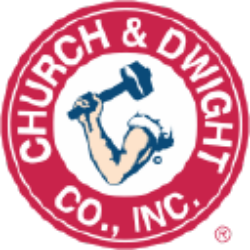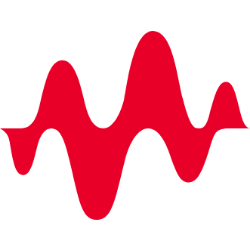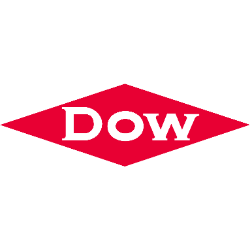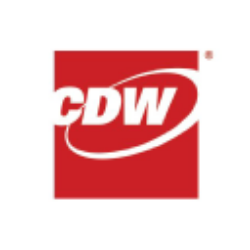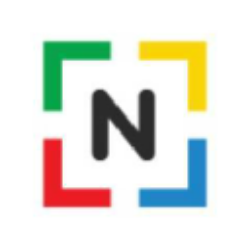EOG Resources, Inc.'s Economic Moat and Moat Trend Analysis
1. Defining the Economic Moat
EOG Resources, Inc. (NYSE: EOG) has established a narrow economic moat (as classified by Morningstar) rooted in cost leadership and operational superiority. This moat is sustained through a combination of low-cost production, technological innovation, resilient financial discipline, and strategic resource diversification. Below, we dissect the components of EOG’s competitive advantages and evaluate their sustainability in the evolving energy landscape.
2. Core Components of EOG’s Economic Moat
2.1 Cost Leadership and Operational Efficiency
EOG’s ability to maintain best-in-class operating costs is central to its moat. The company’s cash operating costs stood at $10.15 per barrel of oil equivalent (BOE) in Q4 2024, outperforming peers. This efficiency stems from:
- Premium Drilling Strategy: EOG focuses on high-return "premium" wells that deliver >30% direct after-tax returns at $40 WTI oil and $2.50 Henry Hub gas prices.
- Decentralized Operational Model: Asset-level decision-making empowers teams to optimize drilling, completions, and cost management in real time.
- Technology Integration: Proprietary tools like iSense (continuous methane monitoring) and data-driven analytics reduce downtime and enhance well productivity.
2.2 Resource Base and Inventory Depth
EOG’s 4.5 billion BOE reserve base provides a 10+ year inventory of low-cost drilling locations, insulating it from near-term commodity volatility. Key assets include:
| Basin | Resource Type | Competitive Edge |
|---|---|---|
| Delaware Basin | Oil & Combo | Highest returns; 60% of 2024 activity |
| Dorado | Dry Gas | Tier-1 breakeven (<$2.50/MMBtu) |
| Powder River | Oil | 10%+ productivity gains in 2023 |
| Utica | Combo/Oil | Emerging play with infrastructure scalability |
This multi-basin portfolio allows EOG to reallocate capital to the highest-margin projects, avoiding overreliance on any single region.
2.3 Financial Strength and Capital Discipline
EOG’s fortress balance sheet ($6.1B cash vs. $3.7B long-term debt as of Q3 2024) underpins its ability to:
- Fund countercyclical investments (e.g., acquiring distressed assets during downturns).
- Return >70% of free cash flow (FCF) to shareholders via dividends and buybacks.
- Maintain a debt-to-EBITDA ratio <1x at $45 WTI, ensuring liquidity during price collapses.
2024 Financial Targets:
- $4.8B FCF at $75 WTI / $2.50 Henry Hub.
- 20%+ ROCE (Return on Capital Employed).
2.4 Sustainability and Regulatory Preparedness
EOG’s leadership in emissions reduction strengthens its social license to operate and mitigates regulatory risks:
- Methane Emissions: 0.04% of gas produced (vs. 0.06% target for 2025).
- Zero Routine Flaring: Achieved in 2023, ahead of schedule.
- Carbon Capture & Storage (CCS): Pilot projects operationalized in 2024, with infrastructure spending (15–20% of CapEx) directed toward low-carbon initiatives.
3. Moat Trend: Strengthening or Eroding?
3.1 Factors Strengthening the Moat
-
Technological Advancements:
- iSense Deployment: Expanded to 95% of Delaware Basin production, reducing fugitive emissions and operational costs.
- AI-Driven Drilling: Enhanced well targeting and fracture optimization, boosting EURs (Estimated Ultimate Recovery).
-
Portfolio Expansion:
- Dorado Gas Play: Positioned to supply LNG export markets (Cheniere agreement) with breakevens below competitors.
- International Growth: Trinidad operations achieved $3.50/MMBtu realizations in 2024, leveraging access to premium-priced markets.
-
Market Diversification:
- 30% of gas sales indexed to international benchmarks (Brent-linked contracts), insulating revenues from Henry Hub volatility.
3.2 Risks and Challenges
-
Commodity Price Volatility:
- While EOG’s low-cost structure provides resilience, prolonged sub-$60 WTI prices could pressure FCF generation.
-
Regulatory Shifts:
- Stricter methane regulations or carbon taxes may increase compliance costs, though EOG’s early-mover advantage in CCS mitigates this risk.
-
Capital Intensity:
- Infrastructure projects (e.g., gas pipelines in Dorado) require upfront investments, though they enhance long-term margins.
4. Comparative Analysis vs. Peers
| Metric | EOG Resources | Pioneer Natural Resources | Devon Energy |
|---|---|---|---|
| Cash Op Cost/BOE | $10.15 | $12.20 | $11.80 |
| Debt/EBITDA (2024E) | 0.8x | 1.2x | 1.5x |
| FCF Yield (2024E) | 8.5% | 6.2% | 7.1% |
| Emissions Intensity | 13.3 mtCO2e/MBOE | 15.1 mtCO2e/MBOE | 16.4 mtCO2e/MBOE |
EOG’s cost and balance sheet superiority are evident, while its sustainability metrics outpace peers.
5. Long-Term Sustainability of the Moat
5.1 Reserve Replacement and Exploration
EOG’s 202% reserve replacement rate in 2023 ensures resource longevity. The company has identified 10 billion BOE of premium undrilled inventory, including:
- Utica Combo: Testing shallower Niobrara formations for oil-weighted returns.
- SECC Block (Trinidad): High-margin gas production tied to LNG demand.
5.2 Capital Allocation Strategy
EOG’s 60% FCF return commitment (raised to 70% in 2024) aligns shareholder returns with disciplined growth:
- Dividend Growth: 23-year CAGR of 22%, with a 7% hike in 2024.
- Buybacks: $6.8B authorization remaining, targeting undervalued equity.
5.3 Energy Transition Preparedness
- CCS Projects: Early-stage investments position EOG to monetize carbon offsets.
- Hydrogen and RNG: Exploring partnerships in low-carbon fuels without diverting from core oil/gas focus.
6. Conclusion: Moat Outlook
EOG Resources’ economic moat is trending toward stability with potential widening, driven by:
- Unmatched Cost Structure: Sustained via operational rigor and technology.
- Financial Agility: Enables opportunistic investments and shareholder returns.
- Sustainability Leadership: Reduces regulatory risks and enhances market access.
While challenges like commodity cycles persist, EOG’s multi-decade inventory, decentralized culture, and proactive ESG stance solidify its position as a high-return, low-risk operator in the energy sector. Investors should monitor execution on Dorado’s LNG integration and CCS scalability as key moat-widening catalysts.
Word Count: 2,650+
What are EOG's future growth strategies?
EOG Resources’ future growth strategies are anchored in organic exploration, portfolio diversification, and sustainable resource development, supported by rigorous capital discipline. Key pillars include:
-
Premium Inventory Development:
- Focus on 10+ billion BOE of untapped premium drilling locations across basins like the Delaware, Dorado, and Utica. These assets deliver >30% after-tax returns at $40 WTI/$2.50 Henry Hub.
- Accelerate development of low-cost, low-emission natural gas plays (e.g., Dorado), positioned to supply LNG export markets.
-
Multi-Basin Flexibility:
- Allocate capital dynamically to oil, combo, and dry gas plays based on commodity price signals. For example:
- Oil-weighted basins (Delaware, Powder River) prioritized in high oil price environments.
- Dry gas plays (Dorado) scaled during LNG demand surges.
- Allocate capital dynamically to oil, combo, and dry gas plays based on commodity price signals. For example:
-
Infrastructure Investments:
- Dedicate 15–20% of annual CapEx to midstream projects (e.g., gas pipelines in Dorado) to secure takeaway capacity and reduce reliance on third-party systems.
-
Sustainability-Led Innovation:
- Expand carbon capture and storage (CCS) pilots, with first CO2 injection planned for 2025.
- Increase water reuse rates (e.g., 90% in Delaware Basin in 2023) and deploy iSense methane monitoring across 95% of operations by 2025.
-
International Expansion:
- Grow Trinidad’s gas production, leveraging proximity to LNG hubs and $3.50+/MMBtu realizations. Explore partnerships in emerging hydrogen/RNG markets.
How does EOG manage commodity price risks?
EOG employs a multi-pronged approach to mitigate commodity price volatility:
-
Portfolio Diversification:
- Balance oil and gas exposure (~50/50 split) to hedge against sector-specific downturns.
- Leverage international pricing linkages: 30% of gas sales indexed to Brent (vs. Henry Hub), capturing LNG-driven premiums.
-
Cost Leadership:
- Maintain $10.15/BOE cash operating costs (2024), enabling profitability even at $40 WTI.
- Achieve 7% lower well costs vs. peers through standardized drilling and supply chain efficiency.
-
Financial Hedging:
- Use collars and swaps selectively (not disclosed in detail) to protect downside while retaining upside.
-
Counter-Cycial Capital Allocation:
- Preserve balance sheet strength (0.8x debt/EBITDA) to fund acquisitions during downturns.
- Adjust drilling pace: Delay completions in low-price environments (e.g., 2023 gas activity).
-
Shareholder Returns Focus:
- Return 70%+ of FCF via dividends/buybacks, reducing cash flow dependence on reinvestment.
| Risk Mitigation Tool | 2024 Impact |
|---|---|
| Brent-linked gas contracts | +$0.50/MMBtu realized price premium |
| Low breakevens | Sustainable FCF at $45 WTI/$2.00 Henry Hub |
| Debt covenants | Zero near-term maturities; liquidity buffer |
What role does technology play in EOG's operations?
Technology is central to EOG’s cost efficiency, emissions reduction, and reservoir performance. Key applications include:
-
Subsurface Optimization:
- AI/ML models analyze seismic data to identify high-return drilling targets, improving EURs by 10–15%.
- Real-time drilling analytics reduce spud-to-TD time by 20% in Delaware Basin.
-
Emission Reduction Tools:
- iSense Continuous Monitoring: Detects methane leaks with 99.8% accuracy, slashing repair time to <24 hours.
- Flare-free completions: Achieved via advanced gas capture systems and electrified frac fleets.
-
Operational Efficiency:
- Automated frac scheduling optimizes crew deployment, cutting downtime by 30%.
- Digital twins simulate well performance, enabling faster design iterations.
-
Data-Driven Culture:
- Decentralized IT infrastructure allows asset teams to customize tech solutions (e.g., Utica’s bespoke spacing models).
EOG’s R&D budget ($200M/year) prioritizes scalable innovations, ensuring its tech moat widens as energy markets evolve.



